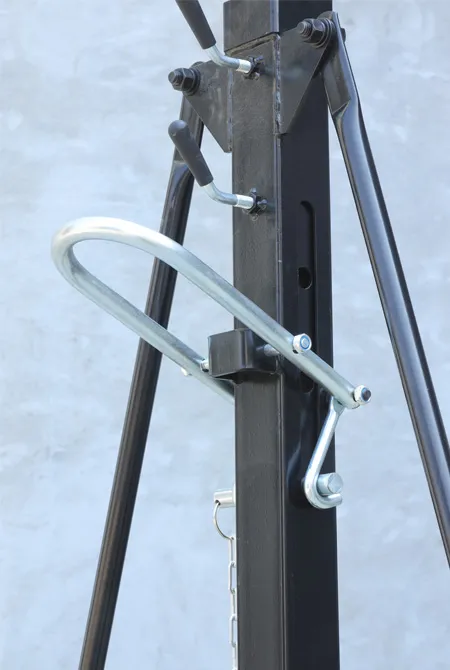Factors Influencing Gantry Crane Pricing and Cost Estimates for Your Project
Understanding Gantry Crane Costs Factors and Considerations
Gantry cranes are indispensable tools in various industries for material handling and transportation. Their versatility and efficiency make them essential in manufacturing, shipping, and construction sectors. However, the decision to invest in a gantry crane raises questions about costs, which can vary significantly based on several factors.
1. Type of Gantry Crane The cost of a gantry crane largely depends on its type. There are several types, including portable gantry cranes, full gantry cranes, and semi-gantry cranes. Portable cranes are typically less expensive, suitable for light-duty operations and can easily be moved. Full gantry cranes are designed for heavy-duty applications and can handle much larger loads, making them a more significant investment. Semi-gantry cranes fall somewhere in between and are often used in spaces with limited headroom.
Understanding Gantry Crane Costs Factors and Considerations
3. Construction Materials The materials used in the crane's construction also significantly influence the price. Steel is the most common material due to its strength and durability, but the type of steel (e.g., standard steel vs. high-strength steel) and the thickness can affect costs. Additionally, the quality of components, such as wheels, hoists, and chains, plays a role in the overall expense.
gantry crane cost

4. Customization Custom-built gantry cranes tailored to specific needs or unique environments will typically cost more than standard models. Features such as adjustable height, specific dimensions, or specialized paint coatings can add to the cost, but they may also increase operational efficiency and usability.
5. Manufacturer and Brand The reputation of the manufacturer or brand can significantly affect pricing. Established brands may charge more due to their reliability, warranty offerings, and service support. However, opting for lesser-known brands may save money upfront but could lead to additional costs related to repairs and maintenance.
6. Additional Costs It’s essential to consider additional costs such as installation, transportation, and maintenance. Some suppliers offer package deals that include these services, which can provide savings compared to sourcing them separately.
Conclusion Investing in a gantry crane involves careful consideration of various factors impacting cost. By understanding the type, capacity, materials, level of customization, and brand reputation, buyers can make informed decisions that align with their operational needs and budgetary constraints. Though the initial cost may seem significant, the efficiency and productivity gains from utilizing a gantry crane can provide substantial returns on investment in the long run.
-
Unlock Seamless Relocation with Our Heavy Equipment Moving ExpertiseNewsJun.06,2025
-
Unleash Unrivaled Flexibility with Our Adjustable Gantry CraneNewsJun.06,2025
-
Unleash Heavy-Duty Efficiency with Our Industrial Gantry Crane SolutionsNewsJun.06,2025
-
Revolutionize Steel Handling with Our Magnetic Lifter RangeNewsJun.06,2025
-
Master Equipment Mobility with Premium Machinery Mover SolutionsNewsJun.06,2025
-
Elevate Your Material Handling with Magnetic Lifter TechnologyNewsJun.06,2025
-
YS Permanent Lifting Magnets: The Smarter Way to Handle SteelNewsMay.22,2025
